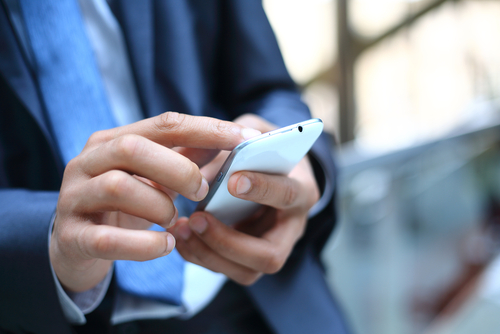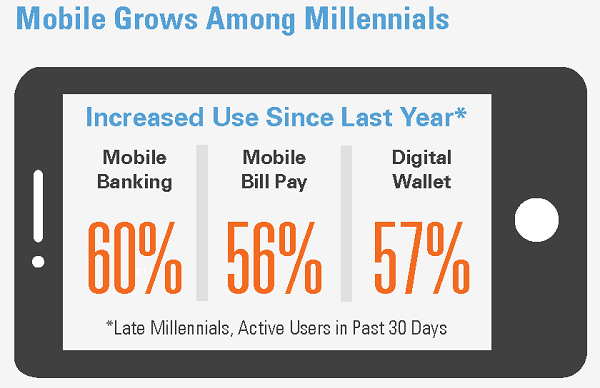Study: Mobile Banking, Payments Growing But Still Face Barriers to Further Adoption
 Ever-improving mobile technology is not only changing how consumers are paying for goods and services, but also is transforming mobile banking, which has evolved from simply viewing bank balances and statements to paying bills, transferring funds between personal accounts and making P2P payments, among other functions. More consumers are using mobile banking, however there are obstacles to further adoption that present opportunities to financial institutions, according to a new report by global provider of financial services technology Fiserv Inc., “Expectations and Experiences: Consumer Payments.”
Ever-improving mobile technology is not only changing how consumers are paying for goods and services, but also is transforming mobile banking, which has evolved from simply viewing bank balances and statements to paying bills, transferring funds between personal accounts and making P2P payments, among other functions. More consumers are using mobile banking, however there are obstacles to further adoption that present opportunities to financial institutions, according to a new report by global provider of financial services technology Fiserv Inc., “Expectations and Experiences: Consumer Payments.”
Of the 40 percent of respondents who used mobile banking within the 30 days prior to the survey, more than half reported using the service more now than they did the prior year. The study also found that 51 percent of respondents said mobile will change the way they bank, 44 percent said mobile already has changed the way they bank and 41 percent of millennials (ages 18 to 35) said they “would leave their wallet at home if they could store all of the information they need in a digital wallet they could access and use anywhere.” The online poll, conducted by Harris Poll on behalf of Fiserv, surveyed 3,048 U.S. adults who have a checking account with a financial institution.
 Although usage and interest of mobile banking and payments has increased overall, millennials are a main driver of this growth with 87 percent reporting using mobile banking. The study also highlights the growth of mobile among late millennials (ages 25 to 35)—their usage of mobile banking since last year increased 60 percent, mobile bill pay use increased 56 percent and use of a digital wallet increased 57 percent compared with last year.
Although usage and interest of mobile banking and payments has increased overall, millennials are a main driver of this growth with 87 percent reporting using mobile banking. The study also highlights the growth of mobile among late millennials (ages 25 to 35)—their usage of mobile banking since last year increased 60 percent, mobile bill pay use increased 56 percent and use of a digital wallet increased 57 percent compared with last year.
For all the growth in mobile banking and payments that the study indicates, there are still hurdles to clear to further increase adoption: security concerns with mobile banking features and lack of awareness that such mobile banking features exist or not knowing how to use them.
Nearly 65 percent of respondents who don’t use mobile banking are leery about security when accessing banking information on a mobile device. Thirty-five percent of consumers who don’t use bill pay and nearly 30 percent of P2P nonusers don’t use these features out of concern for online security and protecting their personal information.
More than 40 percent of respondents reported not knowing their FI offered P2P payment services, and 45 percent didn’t know their FI’s bill pay service offers the ability to receive or view bills online. What’s more, some consumers aren’t using certain banking features because they don’t know how: P2P payments (24 percent), mobile banking (20 percent) and bill pay (14 percent).
Lack of mobile banking awareness or know-how among consumers is one of the biggest barriers to adoption, but also “presents an enormous opportunity for financial institutions to educate customers about the availability of products, their security features and general functionality of digital payments services” according to the report.
Related stories:











































